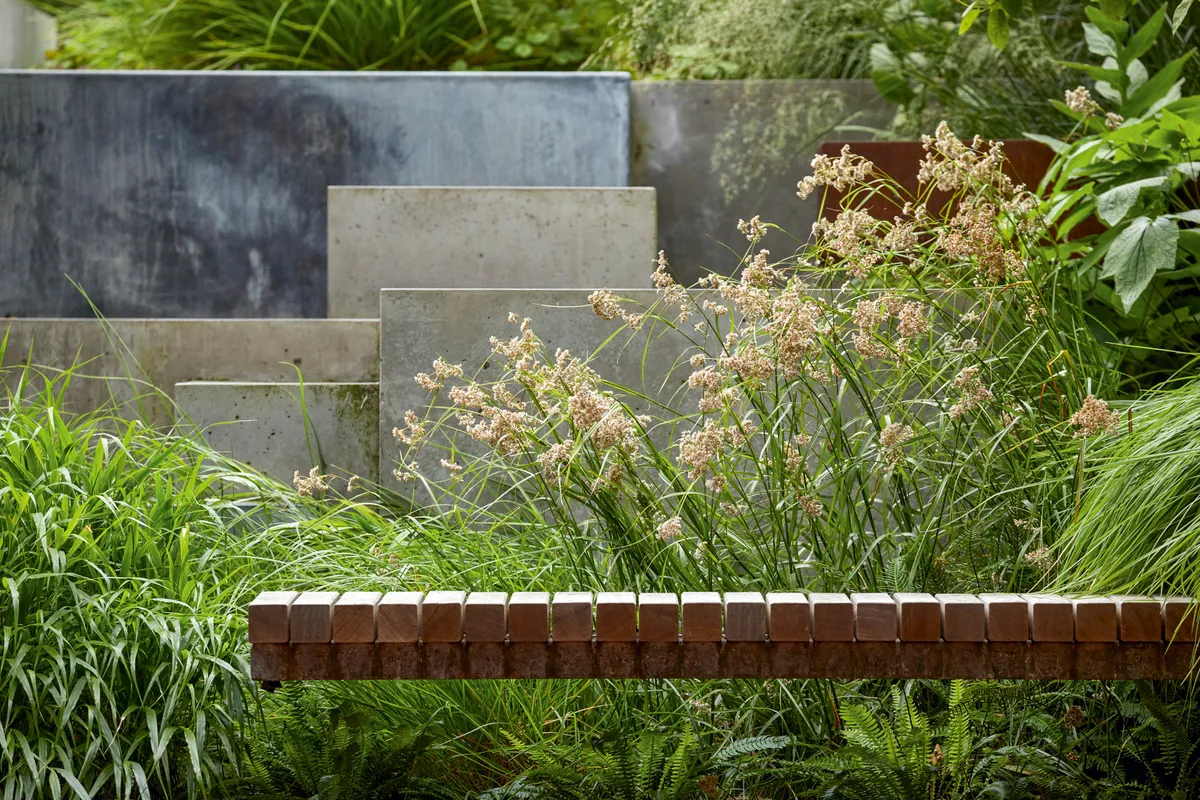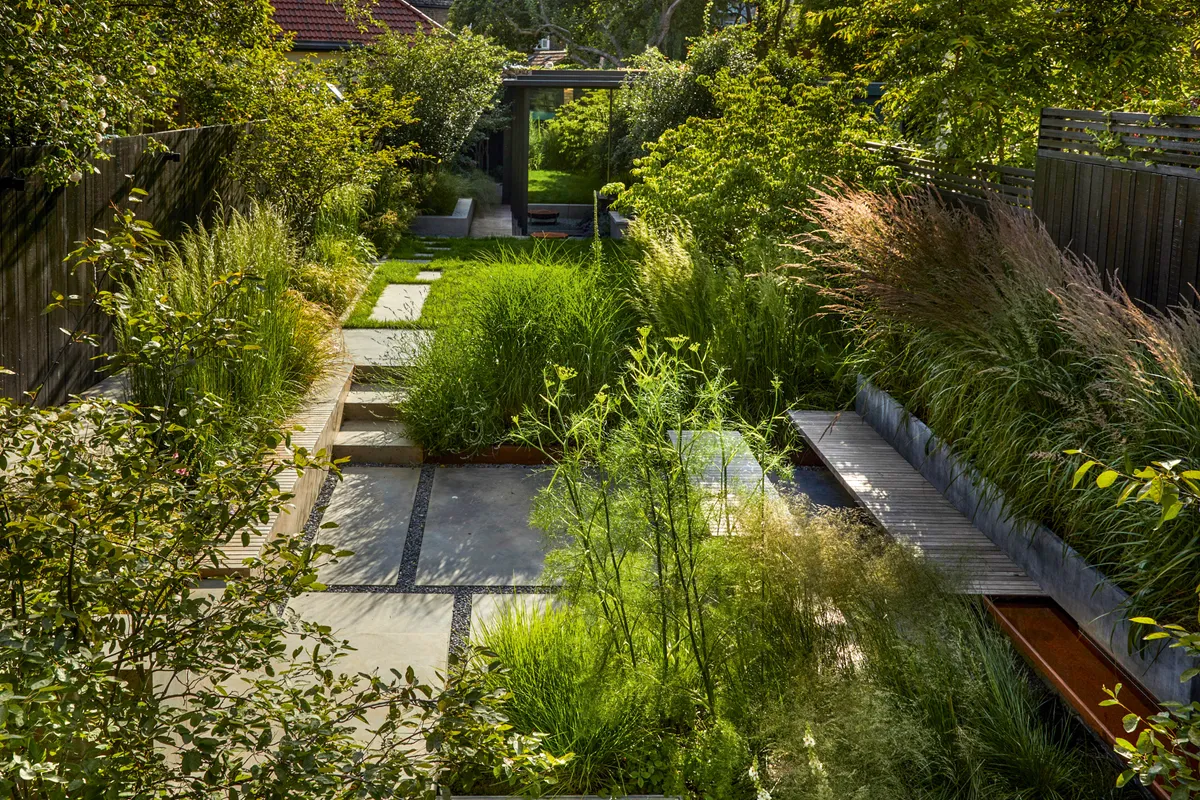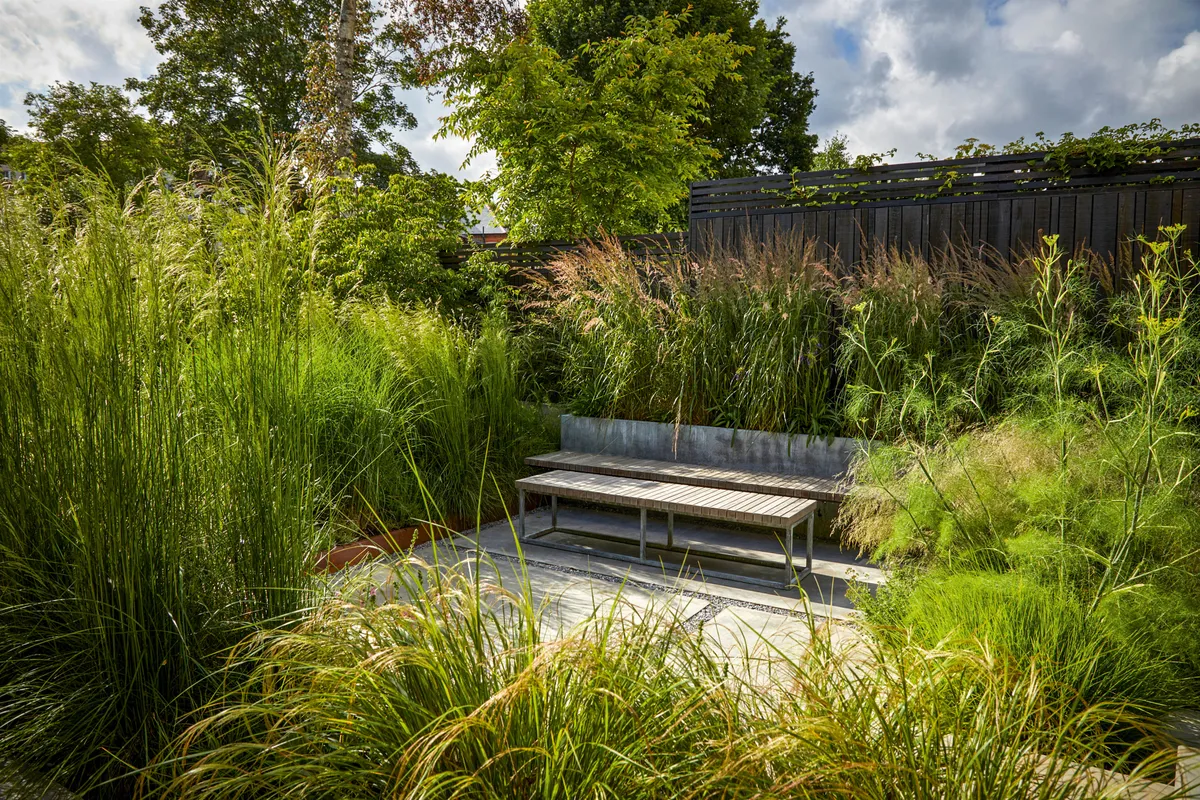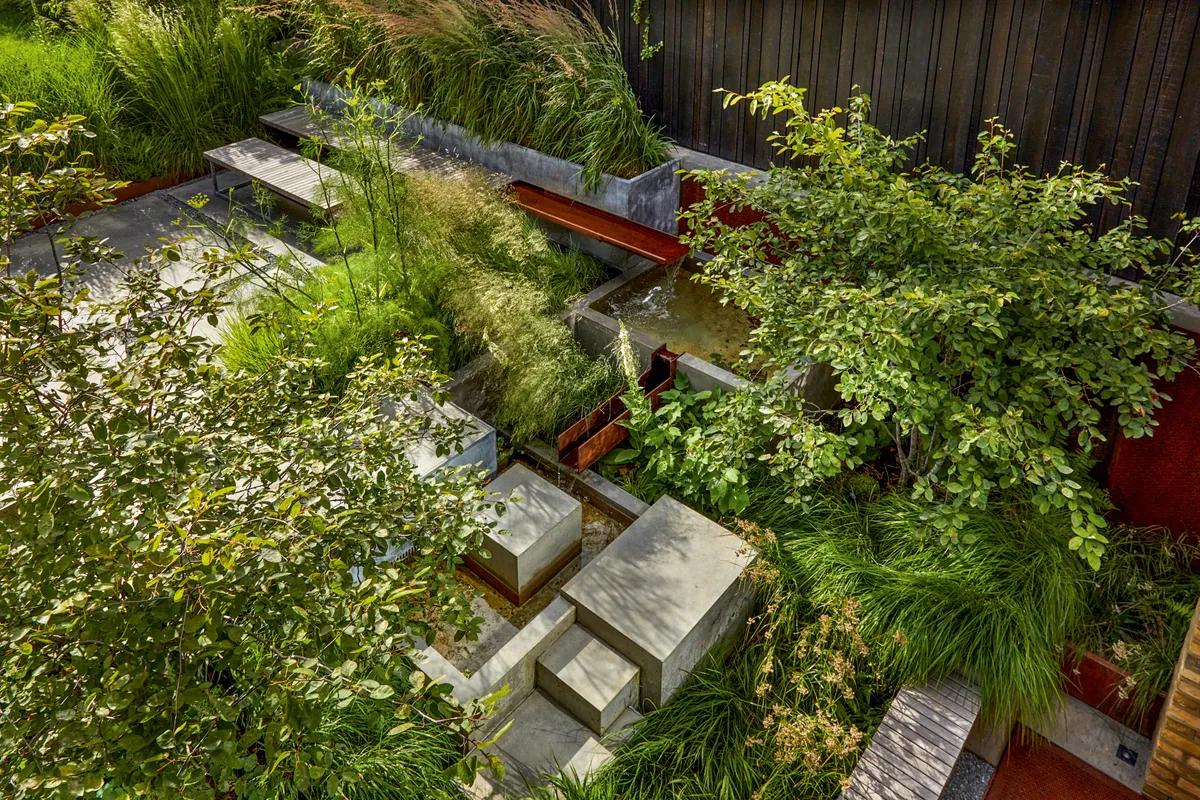The most prominent feature in this long, narrow garden has already earned itself a nickname, “We call it the Cubist cliff path,” explains designer Tom Massey with a smile. This sculptural element merges Brutalist blocks of cast concrete with the experience of a walk along the rugged Cornish coast, complete with the risk of getting one’s feet wet while jumping a stream. “I wanted to create the same sense of adventure and excitement that you get when interacting with a wild landscape,” says Tom. “I took inspiration from the cubist shapes of the architecture, but softened that with generous, immersive planting.”
Don't miss our guide to Tom Massey and Je Ahn's Chelsea 2024 garden
IN BRIEF
- What Long, rectangular, suburban garden on several different levels.
- Where London.
- Size 250 square metres.
- Soil Poor London clay soil, full of rubble, improved or replaces as needed with a compost-enriched loamy topshoil.
- Climate Temperate.
- Hardiness zone USDA 9.
This is Tom’s ingenious solution to the problem of how to access the garden from the newly excavated, lower-ground floor of this imposing Victorian house. Basement extensions have become increasingly popular, but Tom was keen to avoid the standard approach to garden access. “The usual answer is an oppressive bank of steps, with token planted areas, which can feel quite gloomy,” he explains. Instead Tom has designed a series of steps intended as sculpture.“I wanted them to feel interesting and inviting.”

The change of levels also gave Tom the opportunity to introduce the element of water, which flows down through the space via a series of spouts and pools, buffering the suburban soundtrack of planes or cars. The water is chemical-free, providing a habitat for tadpoles, frogs, newts and dragonflies. “It’s important that we see our gardens as places that we share with wildlife, rather than trying to shut it out.” Tom has tapped into the landscape of the surrounding area by using species that are native to this riverside location, including Crataegus monogyna, Deschampsia cespitosa, Luzula nivea, Asplenium scolopendrium and Molinia caerulea.

weaves around the ‘Cubist cliff path’ steps, an area designed to be engaging for adults and fun for children, as well as encouraging wildlife, with water that has not been chemically treated. As a result, the garden has quickly gained a population of frogs that help to keep garden pests under control. - © Alister Thorpe
Tom used the path of the sun as his guide to design two seating areas, positioning one close to the house where the family likes to dine, and another more intimate space with a firepit to the rear of the garden, where a low-slung garden room serves as a home gym. In between the two areas, there’s an area dedicated to a small patch of lawn, requested by the family as a place for their children to play. A cantilevered bench, made from iroko timber, is a favourite spot for the owners’ daughter to sit and read. These spaces are linked by the coherent material and planting palettes. The cube steps morph into cast-concrete ‘stepping stones’ that meander through each area, their irregular layout deliberately slowing the pace of the garden user, “so that they become mindful of their every step”. Cast concrete was also used for the retaining walls that gently enclose each area and double up as extra seating, “There are lots of opportunities for sitting on the built elements, which makes good use of the limited space in this small garden,” explains Tom.

Tom has tempered the hard landscaping with generous areas of greenery, “The hardscape is still readable but it is partially engulfed by the softness of the planting.” The clients love ornamental grasses so Tom opted to champion them in this scheme, with around ten species chosen for their variety of texture, tone and flowering season, including Hakonechloa macra and Sesleria autumnalis. The other elements of the planting palette, such as Verbascum chaixii ‘Album’ and Foeniculum vulgare “are plants that will snake through the grasses and feel naturalistic, light and airy”, all adding to the sense of a journey of discovery.

Adding another layer, Tom has included an impressive number of trees in this small plot, including multi-stem Amelanchier x lamarckii, Crataegus monogyna which is native to this Thameside area, and Pyrus communis ‘Conference’ – which addresses the clients’ desire for some edibles in the scheme. “The trees bring a sense of enclosure that’s particularly important in a small, overlooked garden, but the open multi-stem forms still allow light to permeate and create atmospheric dappled shade, which adds to the sense of calm here.”

USEFUL INFORMATION
For more information on Tom’s work visit tommassey.co.uk